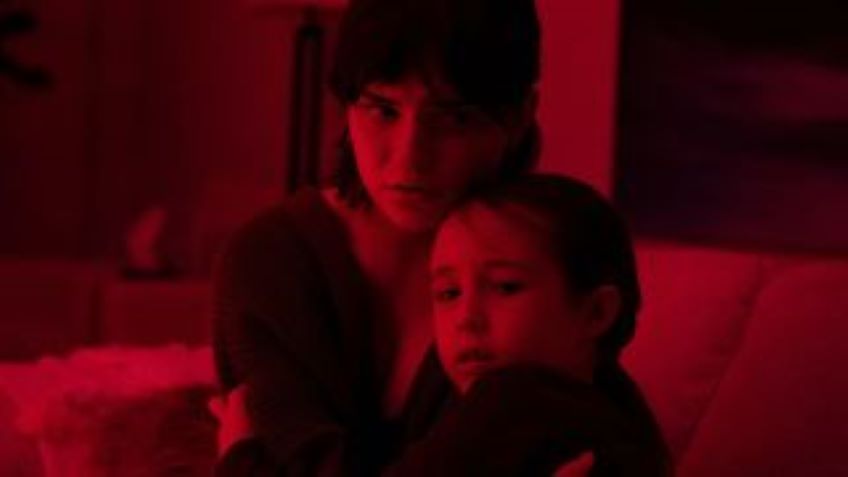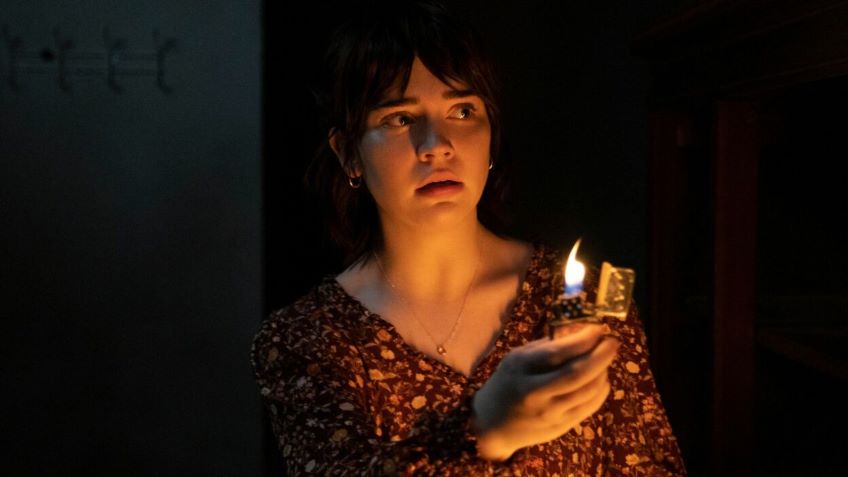Joyce Glasser reviews The Boogeyman (June 2, 2023) Cert 15, 98 mins. In cinemas
Rob Savage’s last two films were techno horror films. Host takes place on a screencast of a video call on Zoom during lockdown and Dashcam is shot from the perspective of either the protagonist’s hand-held iPhone or the dashcam in her car. In The Boogeyman, gadgets are replaced by slamming closet doors and monsters that are not necessarily figments of the imagination. Although the story and metaphorical conceits are similar to those in the 2014 psychological horror movie, The Babadook, Savage’s film is loosely based on the eponymous Stephen King short story from the 1970s.
In the first half, the tried and tested tropes of jump scares and self-slamming closet doors work a treat, but then the film starts to resemble the 2018 film A Quiet Place, only here the characters often act irrationally.
Threatening a child with the bogeyman used to be a parent’s way of scaring them into good behaviour. The premise here is about a vulnerable middle class, respectable family in mourning that encounters the remnants of another, though very different, broken family.

King’s short story has only two characters, both male. One is a psychiatrist named Will Harper (Chris Messina, Call Jane, Argo, Ruby Sparks) who is perceptive but naturally does not say much. The other is a very troubled man named Lester Billings (28, divorced, 3 children, all deceased) who aggressively tells the psychiatrist that he is not seeking treatment, he just needs to tell somebody his story. The three children Billings loved and lost in terrible ways are the core of his story but they are not characters in the story.
Savage’s film, on the other hand, revolves around the psychiatrist’s family, but Billings’ makes such an impression early on in the film that his parallel story is never far from our minds. Before Billings’ bursts into Harper’s home office, we know that teenage daughter Sadie (Sophie Thatcher, Prospect; Showtimes, Yellow Jackets) and pre-pubescent daughter Sawyer (Vivien Lyra Blair) are trying to mourn for their mother who recently died in a car accident, but their minds are not at peace.
Their father, Harper, is burying his grief in work. If Harper is trying to demonstrate his strength helping strangers’ sort out their problems, he is also distancing himself from his, and his daughters’ pain. The moral of the story just might be that if you don’t face grief and loss together, you let the Boogeyman in.
The lugubrious family and the creaking, dark, old house with nooks, crannies and a huge basement with a dodgy light makes the Boogeyman’s job all the easier. Little Sawyer has become petrified of the dark and makes her father check out the closets every night before she tries to go to sleep. Instead of a doll, she sleeps with a round light that she can roll under the bed and in front of her to illuminate the corridors.
Sadie is internalising her grief and trying to be a comforting mother to her sister. But she is having trouble at school with the other girls not knowing how to react to her loss. She gets into trouble for wearing one of her mother’s dresses to school and alienates the few friends she has left with her reactions.
Then one day an imposing, fraught looking man named Lester Billings (David Dastmalchian, Dune, Blade Runner 2049, Prisoners) shows up without an appointment telling Harper that he is desperate to talk to someone. Harper is visibly shaken but tries to act calmly and gives the man an hour, handing him a form.

Alarmingly, in a bit of foreshadowing, Billings sees a closet door open and asks Harper to shut it. Billings mumbles, ‘I thought you would understand, since your wife died and you loved her.’ An alarm bell: Billings knows about Harper’s personal life.
A full scale alarm follows. Billings rambles on about having killed his children, one by one and we try to follow his narrative. It seems that he has not directly killed his children but blames himself. In the short story Billings is a misogynist who talks about his wife as though she were a machine. That is not the case here.
Becoming increasingly convinced his life, and that of his daughters, is at risk he tells the man he has to use the toilet and goes into the kitchen to call the police. Billings, who naturally overhears the conversation, walks upstairs…
The intensity of this scene and the fright factor leading up to it and immediately after it, are so high that you begin thinking The Boogeyman is a winner. And it has to be said that Savage handles the jump scares well throughout the film.
But it gets silly. Realising her father is not going to protect the family, Sadie gets the address from Billings’ form, and goes to the naturally isolated house, alone, at night, leaving her best friend in the car outside. What she finds inside are enough candles to burn down any big derelict wooden house and a woman straight out of the attic in Jane Eyre. The acting is good enough to keep us invested in the outcome.
A long sleep over for Sadie to make up with her friends feels inconsequential and bungled. But the two big mistakes are showing us the CGI monster (though in fairness, he looks like a symbol of death itself) and relying on a dodgy basement light. With something like the Boogeyman, which can be a figment of the vulnerable mind, leaving it ambiguous, or to our personal imagination, is preferable,
If you are afraid of the dark, or of finding demons of any kind, the basement is the last place to go, yet time and again everyone in scary movies goes there. And there is always a dodgy light. You begin to think of the blockbuster horror movie A Quiet Place which is a shame, as this film has a solid enough premise to avoid such comparisons. The entire final scene of that film takes place in the basement where the family congregates to shore up its defences to do battle with visible creatures.




